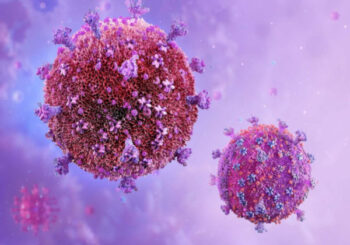By Amelia Harris
Staff Writer for Wake Up World
Insights from Oregon Health and Science University bring us closer to a widespread cure for AIDS
In a groundbreaking study conducted by Oregon Health & Science University (OHSU), researchers have uncovered vital information that could pave the way for a cure for HIV. The study, published in the esteemed journal Immunity, reveals how two nonhuman primates were successfully cured of the simian form of HIV after undergoing a stem cell transplant. These findings shed light on the intricate mechanisms involved in achieving a cure and offer hope for developing a more accessible treatment for the virus that has afflicted millions worldwide.
[pro_ad_display_adzone id=”110028″]
The Berlin Patient and the Path to HIV Cure: The journey towards an HIV cure began in 2009 with the remarkable case of the Berlin Patient. This individual, living with HIV and diagnosed with acute myeloid leukemia, underwent a stem cell transplant in Germany. Stem cell transplants, also known as bone marrow transplants, are commonly employed in cancer treatments. In a serendipitous twist, the Berlin Patient received stem cells from a donor with a mutated CCR5 gene, rendering him resistant to HIV. This landmark case marked the first reported instance of an HIV cure through a stem cell transplant. Subsequently, four more individuals have experienced similar success.
Unveiling the Potential
Stem Cell Transplants and HIV Cure: The OHSU-led study involved the use of Mauritian cynomolgus macaques, a species of nonhuman primates that had previously shown promising results with stem cell transplants. Of the eight subjects included in the study, half received transplants from HIV-negative donors, while the other half served as controls without undergoing transplants.
The results were astonishing. Two of the subjects who received transplants were effectively cured of HIV after being treated for graft-versus-host disease, a common complication associated with stem cell transplants. Significantly, these research animals have remained HIV-free for over four years, making them the first long-term survivors of HIV-cured primates.
Two Crucial Factors for HIV Cure: Through their investigation, the researchers identified two crucial factors for achieving an HIV cure via stem cell transplants. Firstly, the transplanted donor stem cells were found to recognize and eliminate the recipients’ HIV-infected cells, akin to the process of graft-versus-leukemia in cancer treatments. Secondly, the study highlighted the importance of preventing HIV from utilizing the CCR5 receptor to infect the transplanted donor cells.
The Clearing Process
Understanding HIV Eradication: The researchers observed a step-by-step eradication of HIV from the subjects’ bodies, offering valuable insights into the clearing process. Initially, HIV became undetectable in the peripheral blood circulating in their limbs. Subsequently, the virus was eradicated from lymph nodes, which are vital immune tissue responsible for fighting infections. Interestingly, the lymph nodes in the limbs were the first to become HIV-free, followed by those in the abdomen. This sequential pattern could aid clinicians in evaluating the effectiveness of potential HIV cures and provide explanations for cases where initial clearance is followed by later detection.
Moving Forward
[pro_ad_display_adzone id=”110030″]
A Promising Path to a Cure: Dr. Jonah Sacha, the lead researcher of the study, expressed optimism about the implications of their findings. The team’s ultimate goal is to develop a cure that can be administered through a single injection, eliminating the need for a stem cell transplant. Future research will delve deeper into understanding the immune responses of the HIV-cured primates, identifying specific immune cells and targeted molecules.
Conclusion
The groundbreaking research conducted at Oregon Health and Science University represents a significant stride toward finding a cure for HIV/AIDS. By unraveling the intricate mechanisms involved in stem cell transplants, the study has provided crucial insights into HIV eradication. These findings bring us closer to realizing a widespread cure for this global health crisis, offering hope to the millions of individuals affected by the virus. As scientists and clinicians continue to build upon this research, the dream of an HIV-free world draws nearer.
References
https://www.eurekalert.org/news-releases/990338
https://www.cell.com/immunity/fulltext/S1074-7613(23)00216-9
About the author:
Amelia Harris is a writer and eco-activist, interested in health and all things esoteric, with a passion for sharing good news and inspiring stories. She is a staff writer for Wake Up World.
[pro_ad_display_adzone id=”110027″]







